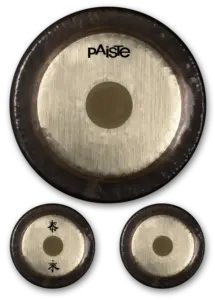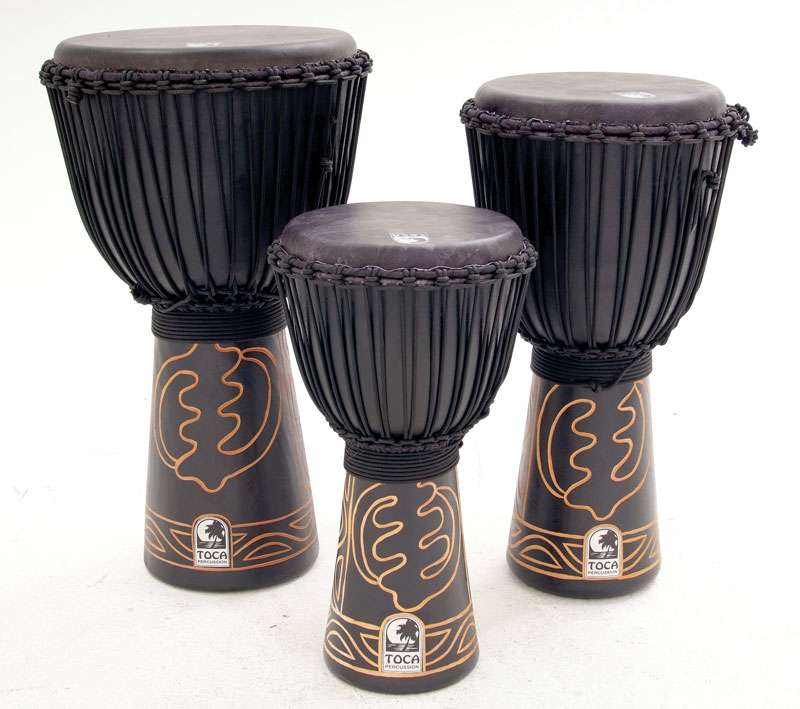
How to choose a djembe
Contents
Djembe is a West African goblet-shaped drum with an open narrow bottom and a wide top, on which a skin membrane is stretched – most often goat. In terms of shape, it belongs to the so-called goblet-shaped drums, in terms of sound production – to membranophones. The djembe is played with the hands.
The djembe is a traditional instrument of Mali. It became widespread thanks to the strong state of Mali founded in the 13th century, from where the djembe penetrated the territory of all of West Africa – Senegal, Guinea, the Ivory Coast, etc. However, it became known to the West only in the 50s . XX century, when the music and dance ensemble Les Ballets Africains, founded by the Guinean musician, composer, writer, playwright and politician Fodeba Keita began to give performances around the world. In subsequent years, interest in the djemba grew rapidly and strongly; now this instrument is very popular and is used in a great variety of musical groups.
Djembe structure
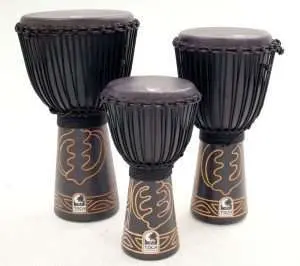
Djembe are made only from a single piece of wood. There is a similar type of drum made from glued strips of wood called ashiko. The membrane is most often goatskin; a little less common is the skin of an antelope, zebra, deer or cow.

Ashiko
The average height is about 60 cm, the average diameter of the membrane is 30 cm. The skin tension is regulated using a rope (often passed through metal rings) or using special clamps; the case is sometimes decorated with carvings or paintings.
Djembe Corps
From plastic. The sound of plastic djembe is far from authentic, loud. But they are bright, almost weightless, durable and perfectly tolerate high humidity. Small plastic djembe sounds very interesting in the choir of large drums.
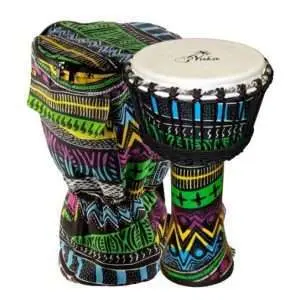
From a tree. These djembe sound more authentic. In fact, they are not much different from ordinary, unnamed Indonesian drums. Is that a label and a stricter compliance with the standard. Like plastic ones, they are classified as amateur, for beginners a very good option.

There are several types of wood that are best suited for djembe drums. The best of them are made from hardwoods, which are varied. The wood traditionally used for djembe, Lenke, has excellent acoustic and energy properties.
Soft wood is the least suitable for African drum making. If you can press your fingernail into the wood and make an indentation, then the wood is too soft and would be a poor choice . A djembe drum made from softwoods will be much less durable and cracks and breaks can be expected over time.
Djembe form
There is no single correct form for all djembe. There are a number of different variations of the outer and inner shape of the drum. Proper form is one of the most important factors to consider when purchasing a djembe, but also one of the most difficult parameters for beginners to determine.
The leg and the bowl must be proportional , for example, the diameter of the membrane 33cm must correspond to the height of the instrument no more than 60cm. Or a 27cm membrane should correspond to a 50cm drum height. Not more. Do not buy a djembe drum if it has a too narrow bowl on a long stem, or a wide bowl on a short one.
sound hole
The sound hole, or throat, is the narrowest point inside the drum, between the bowl and the stem. It plays a big role in determining the pitch of the bass note of the drum. The wider the throat, the lower the bass note. A djembe with a very wide bore will produce very deep bass , while a djembe with a narrow bore will be almost inaudible. An ordinary djembe is a solo instrument for a separate rhythm part, for which it is important to sound not only deep, but also sonorous.
How to choose a djembe size
8 inch djembe
They are also called children’s djembe, but people of any age can play them. By the way, if the djembe is small, it does not mean that it is completely silent, and that it cannot produce bass or makes bass and slap sounds identical. If an instrument is made and tuned according to all West African rules, then it will sound as it should, regardless of its size. Such small-sized models are ideal for traveling or hiking. Tool weight: 2-3 kg.
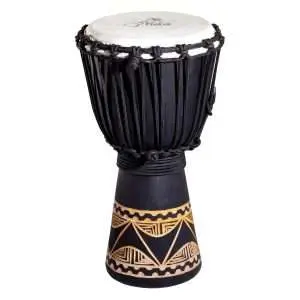
10 inch djembe
This type is good for playing in small instrumental groups. It can be taken for walks or hiking and tourist trips. The sound of such an instrument is already much better. Tool weight: 4-5 kg.
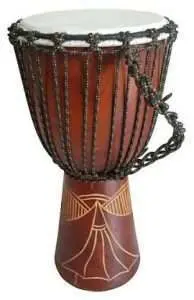
Djembe 11-12 inches
This type of instrument is already more suitable for the stage, but can be used both for walking and for meeting with friends. In other words, the golden mean. Tool weight: 5-7 kg.

Djembe 13-14 inches
A powerful instrument with a powerful sound that makes glasses and glasses tremble. This is a professional level instrument, it produces rich bass that distinguishes it from previous options. Can be used by both beginners and professional musicians. Tool weight: 6-8 kg.
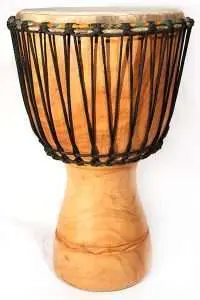
Some novice musicians believe that the larger the djembe, the deeper its bass. In fact, the size of the instrument affects the power of the sound as a whole . Large djembe have a much wider sound range than those that are more modest in size.
It is also important to consider that the sound depends on how the instrument is tuned . For example, the lead djembe has a tightly stretched membrane, which results in higher highs and less loud bass. If a low sound is preferable, then the drums are lowered.
Leather
The surface of the skin is another important point. If it is whitish, thin and generally resembles more paper, then you have a cheap fake or just a low-quality tool. In fact, the skin must be durable with sufficient thickness. Pay attention to its clearance, if there are any damages (cracks) , then during operation the skin may disperse or simply tear.
We noticed transparent spots – take a closer look, these could be cuts. But if you see areas where the hair was removed along with the bulbs, it’s not scary. The presence of scars on the surface of the skin for djembe is also not desirable. Also look at how neatly the skin of the membrane is trimmed, or has jagged edges. This will also tell you how good the drum is.
Tips from the Apprentice store on choosing a djembe
- Look at the look and size. You must love the drum.
- We try the drum for weight . The difference in weight between two identical drums can be significant.
- Let’s look at the skin . If it is white, thin and resembles paper, you are holding a cheap souvenir in your hands. The skin should be thick and strong enough. Look at the clearance: it should not have holes and cuts – they can disperse when stretched. If you see transparent areas, take a closer look at them: these may be cuts (and this is not good), or there may be places where the hair was plucked out during shaving along with the bulbs (and this is not scary at all). Scars are not desirable.
- Inspect for cracks . Small cracks on the leg are not terrible, they will not affect the sound. Large cracks on the bowl (especially through) and on the stem are a defect that significantly affects the strength and color of the sound.
- Let’s look at the edge . In a horizontal plane, it should be flat. It should not have dents. The edge should be rounded, without sharp edges, otherwise you will beat off your fingers, and the membrane in this place will soon fray. For souvenir Indonesian djembe, the edge is simply cut off without rounding – this is very bad.
- We look at rings and ropes . The rope must be solid: it must be a rope, not a thick thread. If the jembe has a rope instead of a lower metal ring, this is a sure marriage. You will never be able to tune such a drum. In addition, this is a sure sign of a cheap Asian souvenir that even a professional djemba master cannot pull out. The lower ring can be made of wire or rebar, the rope can be changed, new skin can be put on, but you will not be happy with the result.
How to choose a djembe



